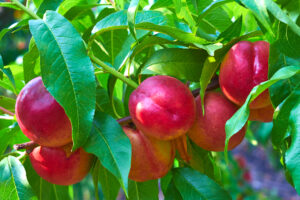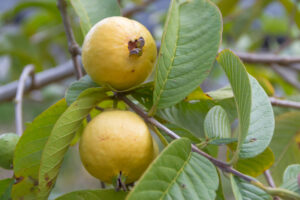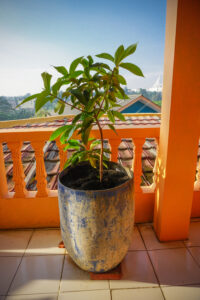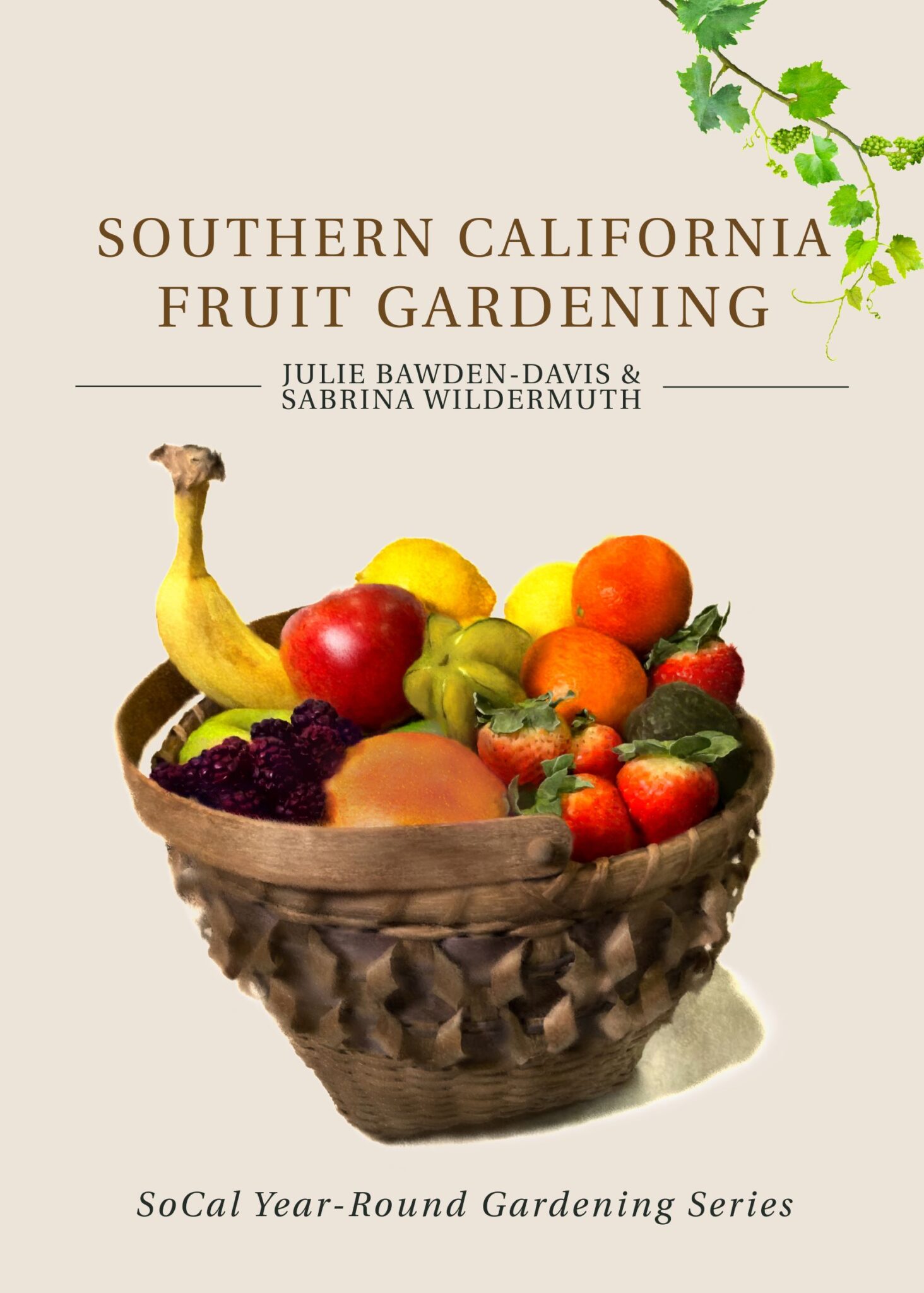Time to Plant Fruit Trees
Bareroot season is upon us. It’s time to plant deciduous fruit trees in Southern California. Fruit tree gardening in Southern California is highly rewarding. SoCal is a mecca for growing fruit. In fact, just about any fruit can be grown here. This includes most stone fruits, and semi-tropical and even tropical fruits.
Low-Chill Fruit Varieties for Southern California
The only thing that will limit you when it comes to growing stone fruits in Southern California is our lack of chill hours. In many areas of the country, you can’t plant certain tender fruits due to freezing. But here in SoCal, we have the opposite problem—not enough cold weather. This means we need to plant low chill fruit trees.
Growing the right low-chill varieties for SoCal is so important because if such trees don’t get enough chilling hours in late fall and early winter, they won’t grow well, bloom or fruit. If it does produce any fruit, it will likely be deformed and small.

What are Chill Hours for Southern California Fruit Trees?
Chill hours refers to how many hours during the late fall and early winter that temperatures are between 32°F to 45°F. When the temperatures reach between this range, fruit trees develop hormones responsible for breaking dormancy. Without this hormone releasing, the trees won’t break dormancy at the correct time in spring for blooming and fruiting. The best low-chill fruit trees require 100 to 350 chill hours.
To succeed with your fruit garden in Southern California, you must plant low chill fruit tree varieties. My book Southern California Fruit Gardening, the second book in my SoCal Year-Round Gardening Series, tells you how to grow more than 40 fruits in Southern California, including the best low chill fruit varieties.
Why Choosing Low-Chill Fruit Varieties is So Important
If you think you’ll just pick up a fruit tree at your nearest big box nursery and plant it and see what happens, you might want to rethink that. A fruit tree is a long-term project and investment.
It takes most trees 3 to 5 years to begin fruiting. You’ll put a lot of time and energy and hopes into a fruit tree. Do you really want to find out a half decade later that it is the wrong type of tree and will never fruit for you? Buy a fruit tree from a reputable nursery that knows their fruit trees, and make it a low-chill variety. Unmarked fruit trees from big box garden stores are often best grown in other parts of the country.

Guavas
Semi-Tropical Fruit Tree Growing in Southern California Gardens
Thanks to SoCal’s mild, semi-tropical weather, you can grow a wide variety of what are known as exotic or rare fruits. These include kiwi fruit plants, lychee plant, guava tree, passion fruit vine, pineapple plant, persimmon plant and banana plant, to name a few.
True, you can get many of these fruits from the grocery store, but when you grow your own, they taste like Mother Nature intended. Sweet and juicy. Growing blueberries in your backyard will produce the best berries you have ever tasted. I promise you.
Exotic fruit trees lend an attractive, tropical element to your garden. They also flower and produce fruit throughout the year. For instance, in our winter months you will harvest cherimoya. Some trees like white sapote can bear just about all year for you in SoCal.

Growing Fruit in Containers
If ground space is limited in your Southern California garden, you can grow many fruiting plants in containers. This is the case with small fruiting plants. For instance, growing strawberries in pots is easy if you keep a few things in mind. Growing raspberries in pots is also possible and highly rewarding.
The key to having luck growing fruit in containers is choosing the right variety. For instance, you will want to opt for dwarf and semi-dwarf fruit trees for containers. Miniature fruit trees not only save on space, they are bred to bear a lot of fruit in a limited area on the plant. That means you’ll have a lot of fruit, providing you treat the plant well.
Some fruits won’t grow well in pots. For instance, growing watermelon in containers is not advised—even if the melon is a miniature one. Watermelon requires room to grow and roam, and the plant drinks a lot of water. You can’t meet either condition when you grow a watermelon or other type of melon in a pot.
Happy Fruit Tree Growing!
Now that you have some idea of the type of fruit trees to grow in Southern California, you can get out there and choose your fruit trees. Growing from bareroot saves you money and allows you to get fruit tree varieties that you may not be able to find otherwise.
Before planting your fruit trees, ensure that you choose the right location. If the plant needs full sun to produce fruit, then provide it. Also prepare the soil according to what the plant requires. If you are planting in clay soil, amend with compost and pumice. Also make sure to create a water basin around the plant to capture water and ensure the newly planted fruit tree stays hydrated.

